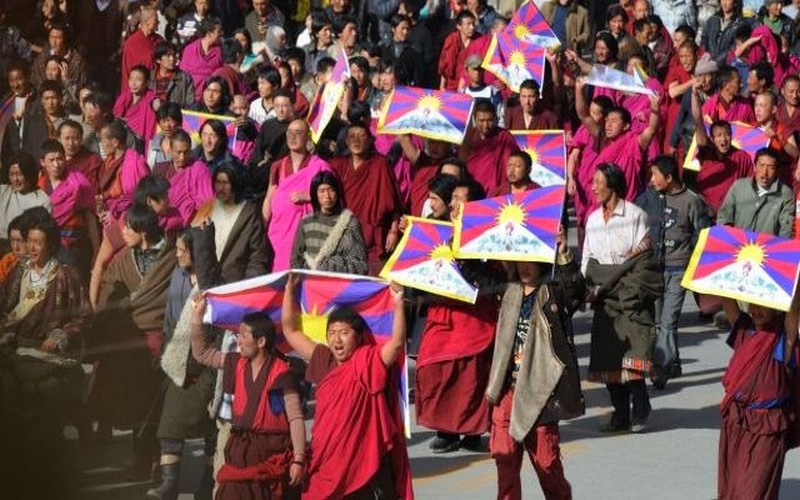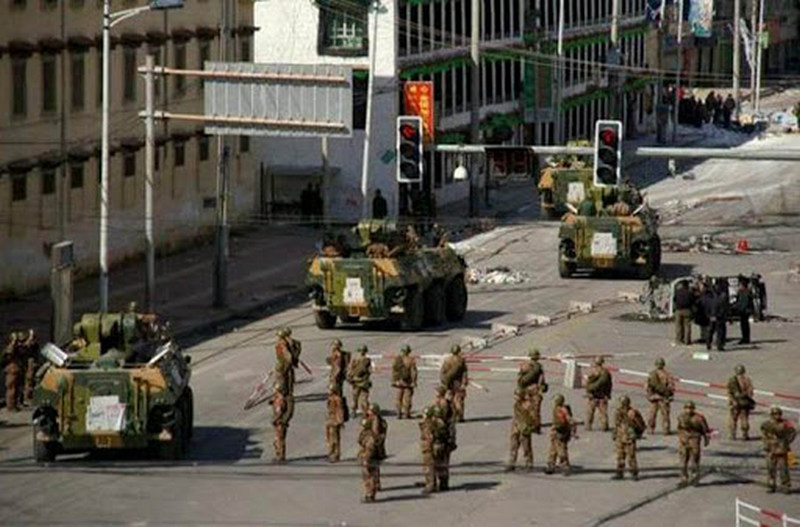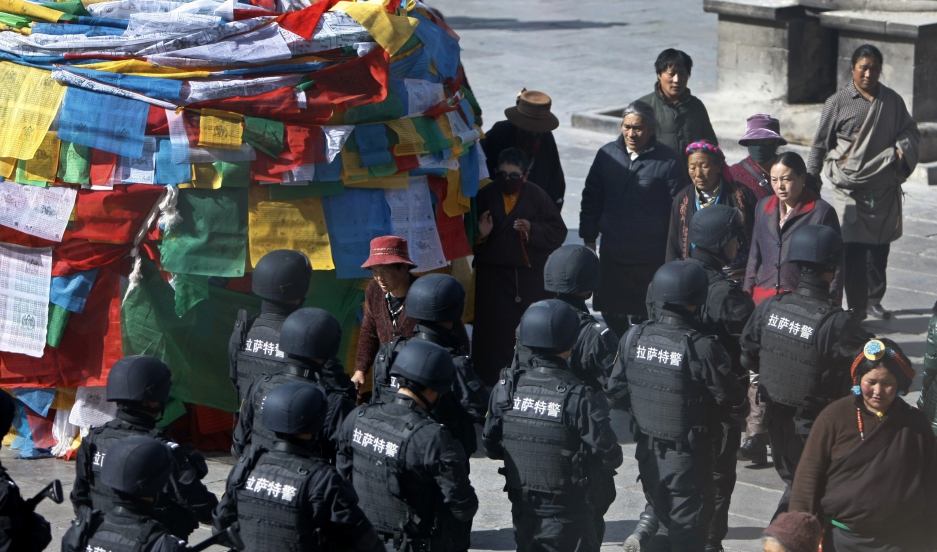Over the past 70 decades, there has been ongoing political repression, social discrimination, economic marginalization, environmental destruction, and cultural assimilation, particularly due to Chinese migration to Tibet which is fueling intense resentment among the people of occupied Tibet.

The communist-totalitarian state of China began its military invasion of Tibet in 1949, reaching complete occupation of the country in 1959. Since that time, more than 1.2 million people, 20% of the nation's population of six million, have died as a direct result of China's invasion and occupation. In addition, over 99% of Tibet's six thousand religious monasteries, temples, and shrines, have been looted or decimated resulting in the destruction of hundreds of thousands of sacred Buddhist scriptures.
Until 1949, Tibet was an independent nation in the Himalayas which had little contact with the rest of the world. It existed as a rich cultural storehouse — a unifying theme among the Tibetans — as was their own language, literature, art, and world view developed by living at high altitudes, under harsh conditions, in a balance with their environment. The authoritarian-communist regime in Beijing continues to call this a "peaceful liberation", that the "Tibetans are living in a Maoist socialist paradise."

Denial of religious freedom
Tibetans and other minority groups occupied by the Chinese Communist Party are denied their basic human rights such as freedom to practice their religions. Yarchen Gar, Buddhist Center situated at Palyul County in Kham province, eastern Tibet is home to over 10,000 nuns, monks, and lay practitioners dedicating to meditation and scriptural studies. The communist state of China started forcefully removing over 7,000 residents in May 2019 from the Center and demolishing the complex in July 2019. Videotapes and photography from the site showing half of the complex becoming barren which the Chinese authorities covered up with plastic. The Buddhist nuns were forcefully confined in Jomda County in eastern Tibet, beaten and subjected to a “patriotic re-education campaign”. They were not even allowed to wear their robes.

Similarly, Larung Gar is thought to be one of the biggest communities for the study of Tibetan Buddhism in the world and is largely populated by monks and nuns. Designated as an institute, rather than any kind of monastery, the settlement was founded in 1980 by Khenpo Jigme Phuntsok – this designation has meant Larung Gar doesn’t have to deal with China's strict rules on monasteries. Today, peaceful monks and nuns at Larung Gar are struggling to preserve their homes. Destruction has already started, threatening religious practice and culture in Tibet. Despite protests across the world against repressive actions by Chinese authorities in Larung Gar, the academy is seeing demolitions and forced removals for the second time in 15 years, as the Chinese government says it must bring down the town's "population."
However, the true population figures are debated – some think it around 40,000 while others estimate to be less than that. Chinese authorities have said that the population must be 5,000 by the end of September 2017. In August and September, Chinese authorities allegedly expelled over 1000 monks and nuns from the Buddhist Academy and forcing them to "participate in the patriotic re-education" campaign. On September 30, over 700 monks and nuns were expelled from the Academy that includes 400 from Golok County and 300 from Yulshul County. Over 300 nuns and monks were reportedly detained by Chinese police when they were returned to their homes in Kham Riwoche, Chamdo County, eastern Tibet, but the exact place where they were held unknown.
Tibetan nun, Rinzin Dolma, committed suicide on July 20, 2016, the first day of the demolition. She left a note saying she “could not bear the pain of the endless Chinese harassment of innocent Buddhists who quietly studied at the institute.” Two more nuns have also reportedly committed suicide. Khenrab Tharchin, a Tibetan political prisoner, died on Monday, August 7, 2016, a result of intense mistreatment by the Chinese authorities while in prison. He was arrested in 2008 after he refused to participate in what the Chinese called the “patriotic reeducation campaign,” a campaign whose aims were to control the Buddhist religious practices and eventually eradicate it completely, to suppress support for His Holiness the Dalai Lama, and to eliminate the notion of an autonomous and free Tibet.
In the year 2017, Chinese authorities had destroyed more than 4,500 homes and monastic buildings at Larung Gar. More than 4,825 monks and nuns have been expelled since 2016 with many forced back to their hometowns and deprived of opportunities to pursue religious studies. The destruction of Larung Gar received international attention in 2016, as organizations like Human Rights Watch and Amnesty International called the decimation a clear violation of religious freedom, however, the demolitions continued, leaving thousands homeless.
- Self-Immolation protests in Tibet against China invasion
- Digital authoritarianism and censorship
- Devoid of education freedom
- Environmental destructions
- The illegal occupation and suppression
- Cultural genocide and national cleansing
